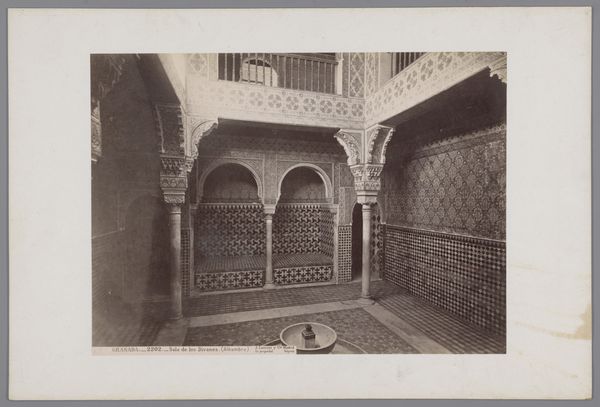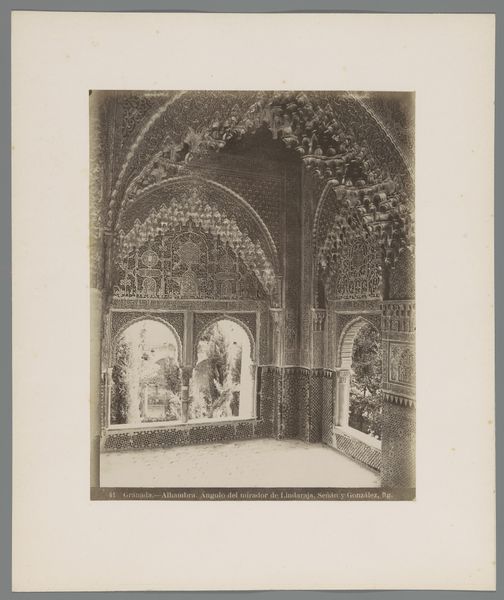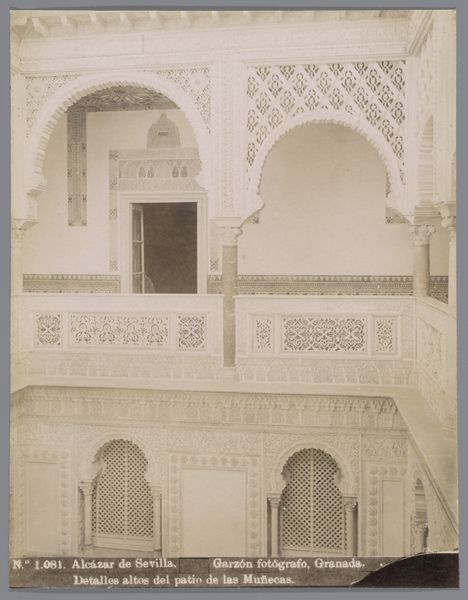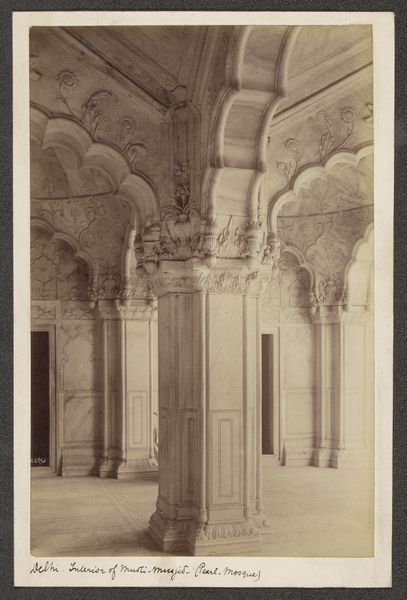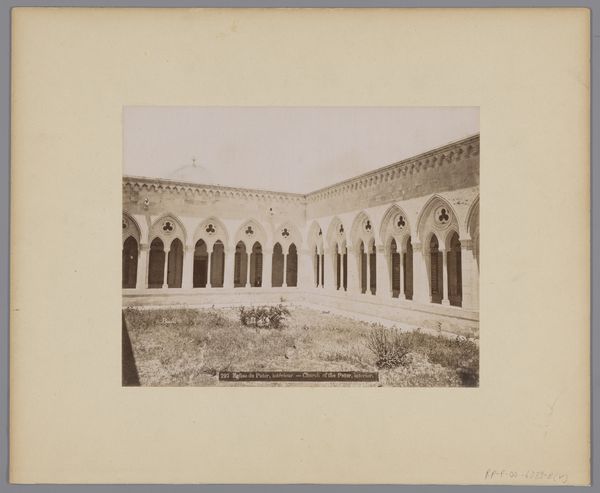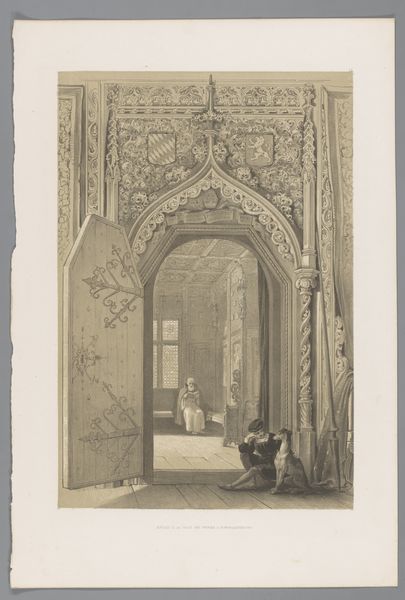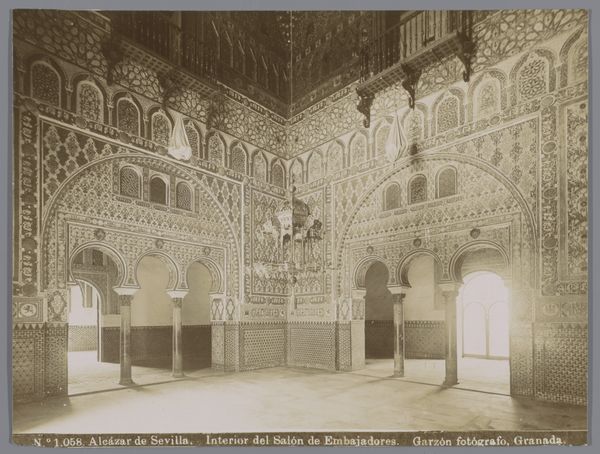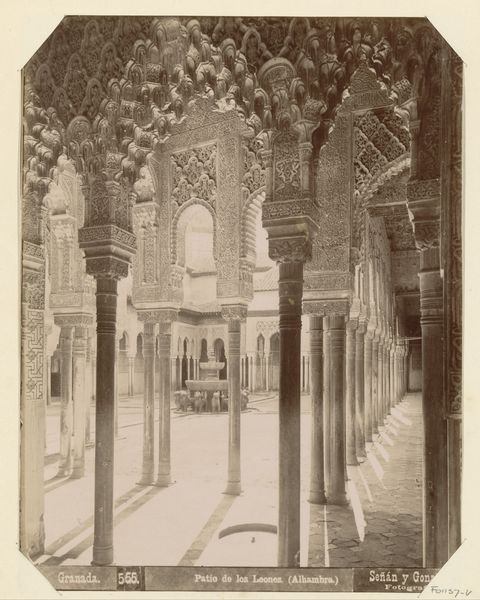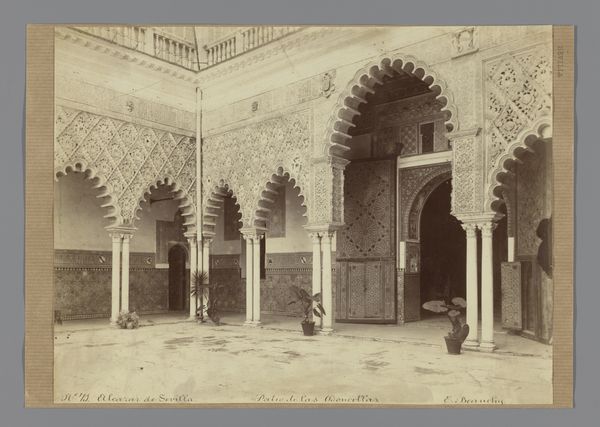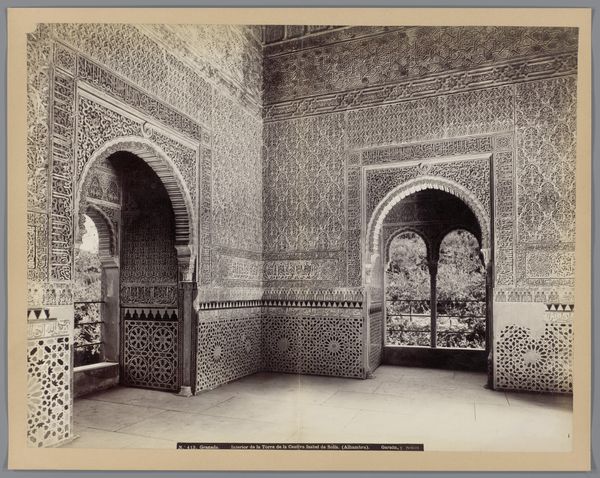
paper, photography
#
still-life-photography
#
paper
#
photography
#
geometric
#
ancient-mediterranean
#
cityscape
#
islamic-art
#
paper medium
Dimensions: height 386 cm, width 290 cm
Copyright: Rijks Museum: Open Domain
Editor: Here we have Emilio Beauchy’s photograph, "Binnenplaats van het Alcazar te Sevilla," taken sometime between 1867 and 1880. It’s on paper. The intricate geometric patterns create a sense of enclosed beauty. How would you interpret this work? Curator: Primarily, I am struck by the interplay of light and shadow that defines the architectural space. Notice how the sharp contrast articulates the geometry and accentuates the rhythmic repetition of the archways and patterned tiles. Can you identify the dominant visual elements contributing to the photograph’s formal structure? Editor: I see the columns create a strong vertical rhythm, and the archways obviously define a horizontal flow. The tiles provide a dense surface pattern, and that contrast between the ornate detail and plain pillars is visually interesting. Curator: Precisely. Consider how the photographer uses tonal gradations within the grayscale to describe three-dimensional form. The absence of human figures allows our gaze to focus purely on the architectural components, making them subjects of the still-life itself, even as they define negative space. The picture plane thus calls attention to surface rather than depth. What about that tension appeals to you? Editor: The lack of people is what makes it still, silent even, frozen in time. It becomes about the lasting architecture more than the moment it was taken. Curator: Precisely. Beauchy’s conscious selection and manipulation of perspective, composition, and tonality contribute to a purely formal understanding of his photographic artistry. Considering such details of surface structure enriches how we interpret photography. Editor: I never considered the absence of something *being* the point, the lack of human figures truly lets the geometrical relationships in the architecture become the dominant elements. Curator: It is about how the intrinsic properties dictate an artwork's deeper reading. This formal method has sharpened your ability to truly 'see' what underlies Beauchy’s aesthetic.
Comments
No comments
Be the first to comment and join the conversation on the ultimate creative platform.
